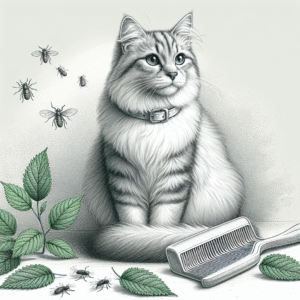
As cherished members of our families, cats bring joy and companionship to millions of households. However, just like humans, cats can suffer from allergies that can affect their quality of life. Understanding these allergies, their symptoms, and potential solutions is crucial for cat owners who wish to ensure the well-being of their feline friends. This article explores the common allergies that afflict cats, the signs that indicate an allergic reaction, and the available treatment options.
What Are Cat Allergies?
Allergies in cats occur when their immune system reacts to a substance or allergen that it perceives as a threat. These allergens can be found in food, the environment, or even external parasites. When a cat’s immune system overreacts to these substances, it can lead to a range of symptoms that can affect their skin, respiratory system, and overall health.
Common Types of Cat Allergies
Environmental Allergies
Also known as atopic dermatitis, environmental allergies in cats are triggered by substances in their surroundings. Common allergens include pollen, mold, dust mites, and chemicals. These allergens can be seasonal or present year-round, and exposure can lead to skin irritations and respiratory issues.
Food Allergies
Food allergies occur when a cat’s immune system mistakenly identifies a specific ingredient in their diet as harmful. Common culprits include proteins such as beef, dairy, chicken, and fish. It’s important to note that food allergies can develop at any age, even if the cat has been consuming the same food for years.
Flea Allergies
Flea allergy dermatitis is one of the most common allergies in cats. It is an allergic reaction to the saliva of fleas. Even a single flea bite can cause an intense allergic response, leading to severe itching and discomfort.
Symptoms of Cat Allergies
The symptoms of allergies in cats can vary depending on the type of allergen and the individual cat’s reaction. Here are some common signs to look out for:
Skin Irritations
Cats suffering from allergies often exhibit symptoms on their skin. These can include excessive scratching, biting, or licking, which can lead to redness, swelling, and hair loss. In severe cases, the skin may become scabbed or develop sores.
Respiratory Issues
Environmental allergens can cause respiratory problems in cats, such as sneezing, coughing, and wheezing. Cats with asthma may experience more frequent and severe symptoms during allergy season.
Gastrointestinal Problems
Food allergies can manifest as gastrointestinal issues, including vomiting, diarrhea, and flatulence. Cats may also experience weight loss and a decrease in appetite.
Ear Infections
Chronic ear infections or inflammation can be a sign of allergies in cats. Symptoms include head shaking, ear scratching, and a foul odor from the ears.
Diagnosing Cat Allergies
Diagnosing allergies in cats can be challenging, as symptoms often overlap with other conditions. A thorough examination by a veterinarian is essential. Here are some common diagnostic methods:
Physical Examination
The veterinarian will perform a comprehensive physical examination to look for signs of allergies, such as skin irritations and respiratory issues. They may also check for external parasites like fleas.
Allergy Testing
Allergy testing can be conducted to identify specific allergens. This may involve blood tests or intradermal skin tests, where small amounts of potential allergens are injected under the skin to observe reactions.
Elimination Diet
If a food allergy is suspected, an elimination diet may be recommended. This involves feeding the cat a novel protein and carbohydrate source that they have not been exposed to before, gradually reintroducing other foods to identify the allergen.
Solutions and Management of Cat Allergies
Avoidance
The most effective way to manage allergies is to avoid exposure to the allergen. For environmental allergies, this may involve using air purifiers, regularly cleaning the home, and minimizing the use of harsh chemicals. For food allergies, identifying and eliminating the problematic ingredient from the cat’s diet is key.
Medication
Antihistamines and corticosteroids are commonly prescribed to manage allergy symptoms. These medications can help reduce inflammation and alleviate itching. However, they should be used under the guidance of a veterinarian, as they can have side effects.
Immunotherapy
For cats with severe allergies, immunotherapy may be recommended. This involves gradually exposing the cat to small amounts of the allergen to build tolerance over time. This treatment requires patience and consistency but can be effective in reducing symptoms.
Flea Control
For cats with flea allergies, strict flea control measures are essential. This includes regular use of veterinarian-approved flea preventatives and keeping the cat’s environment free from fleas.
Conclusion
Understanding and managing cat allergies can significantly improve the quality of life for our feline companions. By recognizing the symptoms and implementing appropriate solutions, cat owners can ensure their pets remain healthy and comfortable. Regular veterinary check-ups and open communication with a veterinarian are crucial in crafting an effective allergy management plan. With the right care and attention, cats with allergies can lead happy, fulfilling lives.
#ChatGPT assisted in the creation of this article.








